|
|
One of the key reasons organizations set up Global Capability Centers (GCCs) is to gain access to high-quality talent that can deliver value at relatively lower costs. One of the best ways to create high value is through innovation efforts. Having meaningful innovation also helps the center become strategically crucial for the business, as innovation is vital for its survival and growth.
However, driving innovation for any team, business unit or geography is a complex exercise and needs significant strategic thinking and navigation. The problem is further accentuated in the case of GCCs, given the distance from priority markets and key decision makers, and hence, requires a more robust innovation strategy and specific on-ground actions.
Before we delve into a GCC’s innovation strategy, it is essential to acknowledge that the types of innovation are understood differently by different people. With multiple terms being used, we will be referring to the three types of innovation as – Incremental, Transformative, and Breakthrough.
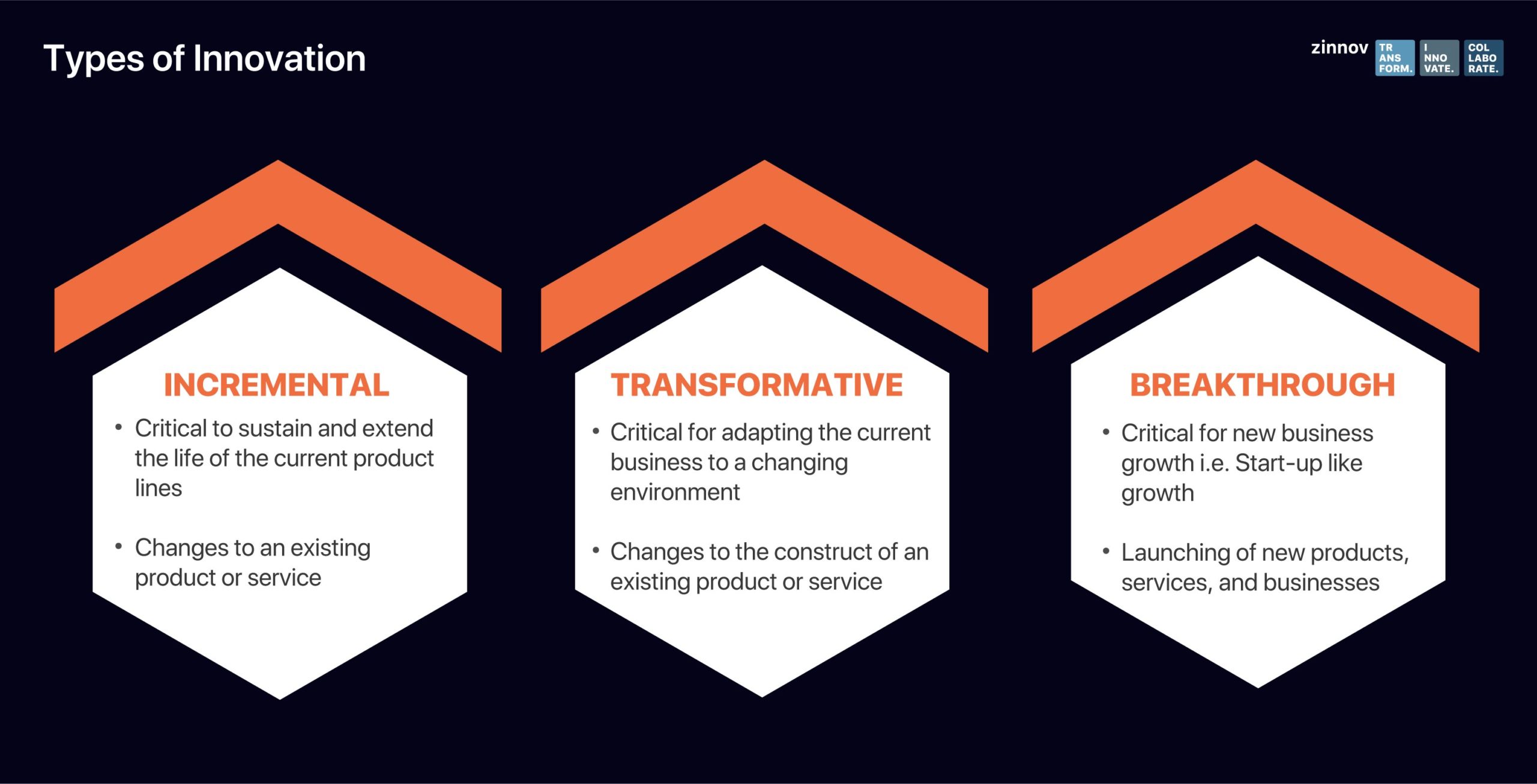
Each of these types of innovation requires a GCC to have a different level of autonomy and support. As we draw comparisons between each type, it is important to note that all 3 are critical and play a unique role in the business’s survival and growth.
To explore how GCCs currently think about their innovation strategy and what their innovation programs mean for the global business, the Zinnov team surveyed 50+ GCC leaders who oversee the innovation budget and its utilization at the center.
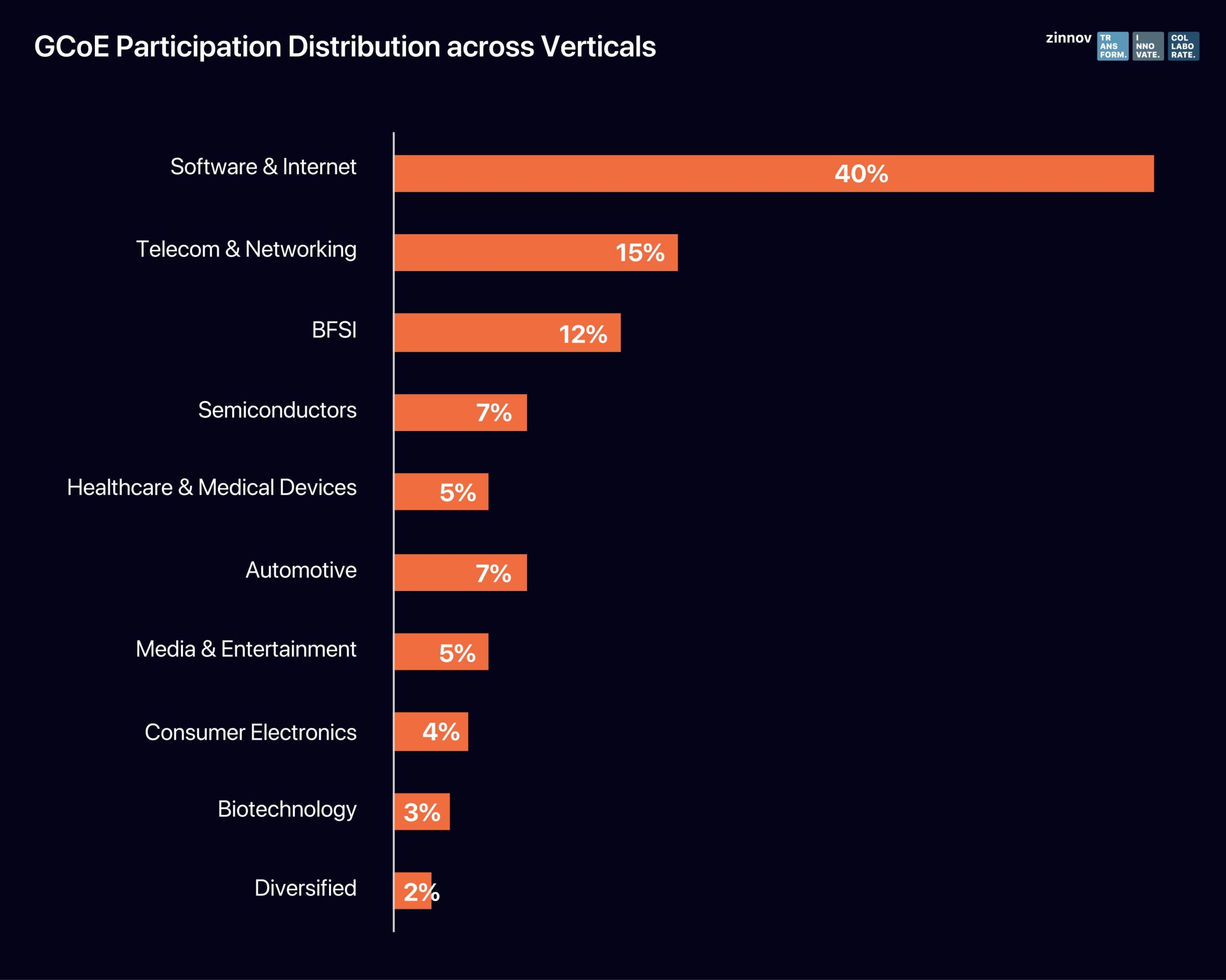
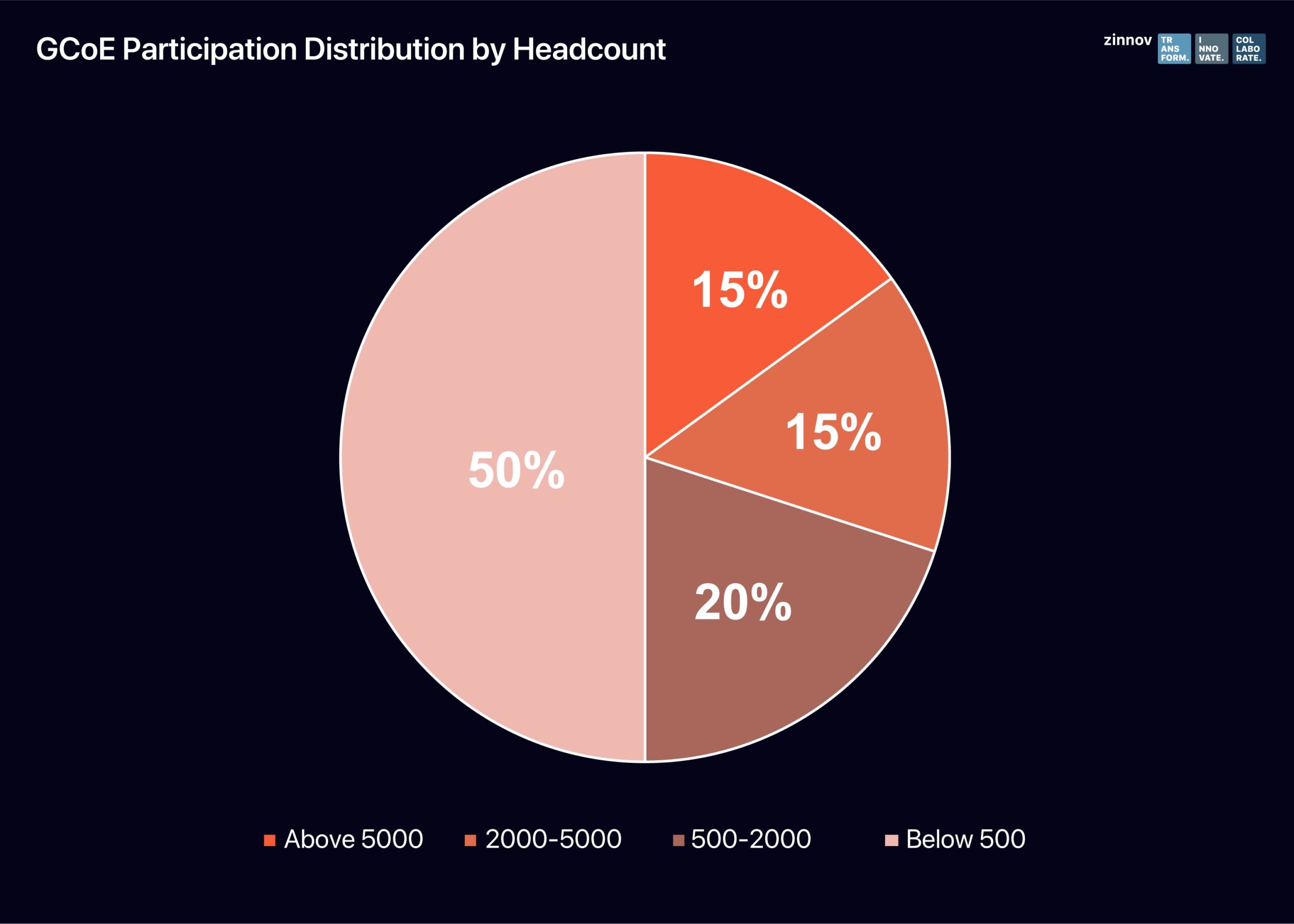
This survey, the first in a series, provided us four key insights on how GCCs are approaching innovation from India.
92% of GCCs focus on Incremental Innovation and 77% focus on Transformative Innovation. Each of these innovation types is critical to sustain and adapt the current products to the changing business environment. Rather than Breakthrough Innovation, which requires identifying future trends, GCCs naturally emphasize Incremental and Transformative Innovation as they have more profound knowledge of existing products and technologies.
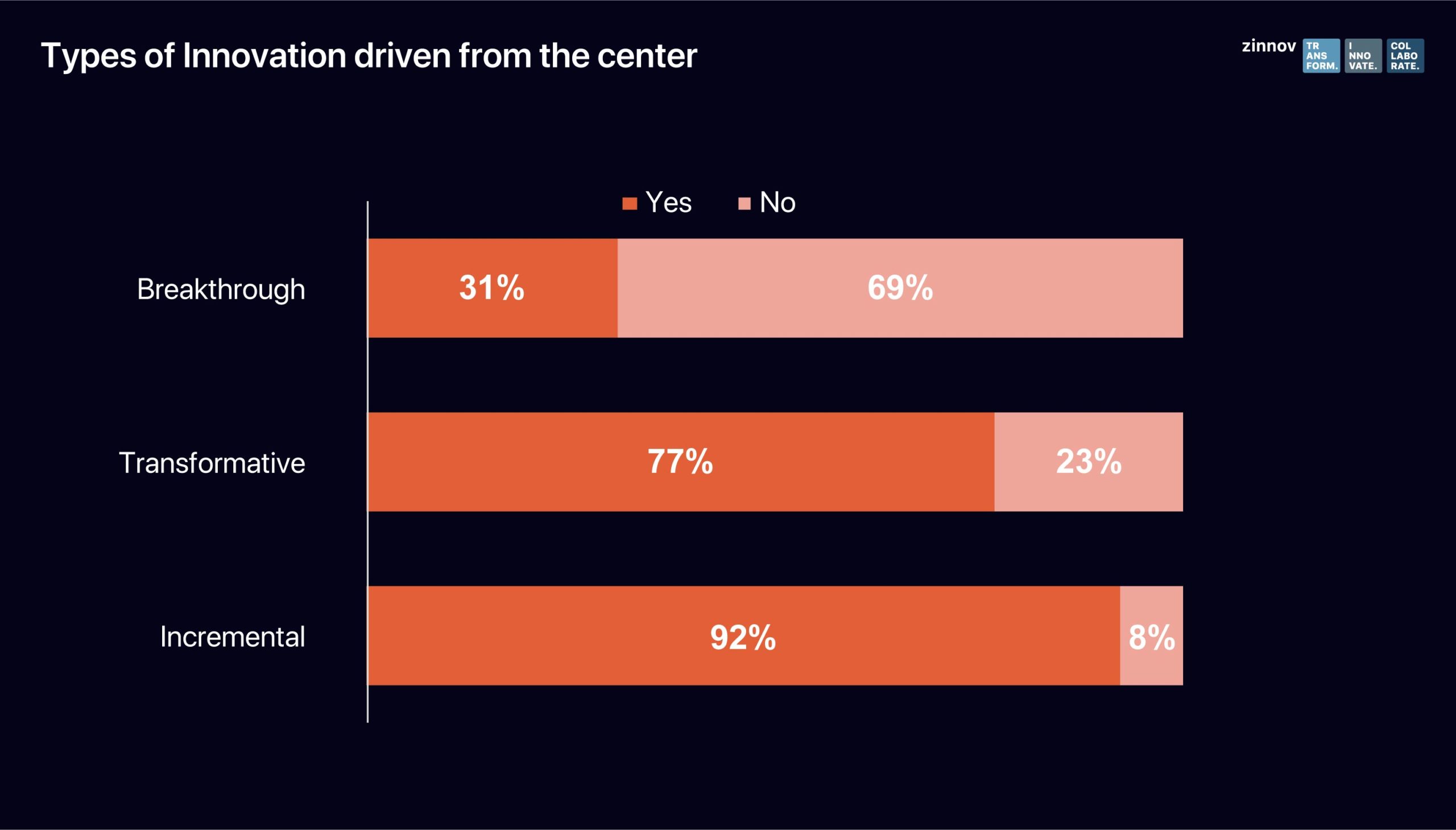
However, CXOs mainly consider Breakthrough Innovation critical for their organization’s future growth and that it will bring high value for the business. Hence, Breakthrough Projects can be of crucial interest to leaders who are continuously involved in outlining the business’s strategy and future growth. However, only 31% of Indian GCCs currently include Breakthrough Innovation in their center’s Innovation Strategy. If GCCs want to become Innovation Hubs, they must add Breakthrough Innovation to their Incremental and Transformative Innovation mix.
As mentioned above, almost all GCCs drive Incremental Innovation. Also, most Incremental Innovation happens in product and service areas, and the GCC’s ability to contribute to product/service innovation is quite natural. Hence, it is understandable that 92% of product/service innovation is incremental.
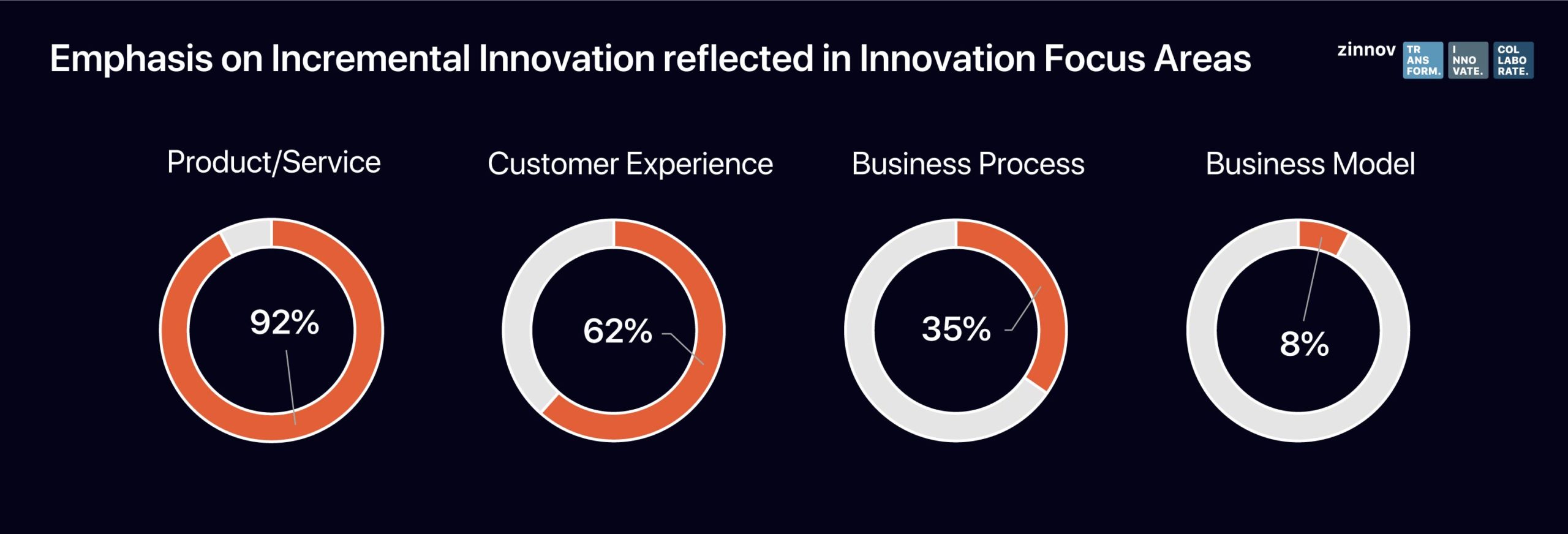
On the other extreme, while business model innovation is almost always synonymous with Breakthrough Innovation, it can be challenging to drive business model changes from the center. Business model innovation requires a significant shift in both value proposition to customers and the operating model. If GCCs are to drive innovation in this area, they need to solve for the distance from key markets, customers, and internal decision-makers.
However, when GCCs want to drive Transformative or Breakthrough Innovation, Customer Experience and Business Process Areas are their best bets. The ability to innovate in these areas has been possible mainly because –
The Incremental Innovation in Product/Service areas that most GCCs focus on, needs deep product and operational expertise, which can best be driven by the center’s employees. Hence, most GCCs prioritize Internal Innovation programs, focusing on exploration, experimentation, and building innovation skillsets among employees.
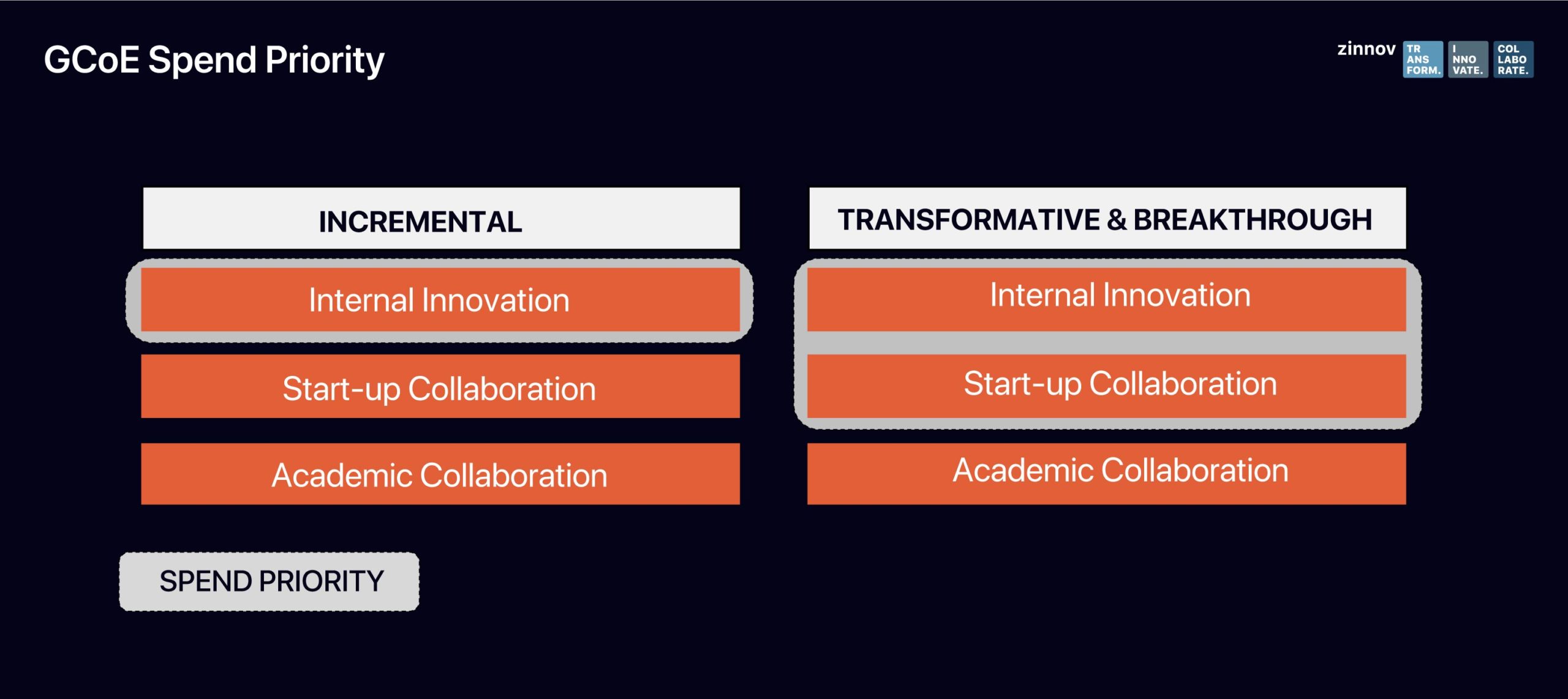
However, this is slightly different for the GCCs that also work on Transformative and Breakthrough Innovation, besides Incremental Innovation. First, since these types of innovation can be driven well internally and externally, we see GCCs running both – internal and start-up programs. Second, since Transformative and Breakthrough Innovation require more incubation time, resources, and involvement from senior leadership, the Internal Innovation programs are designed to build and launch new products and services, in addition to exploration and experimentation.
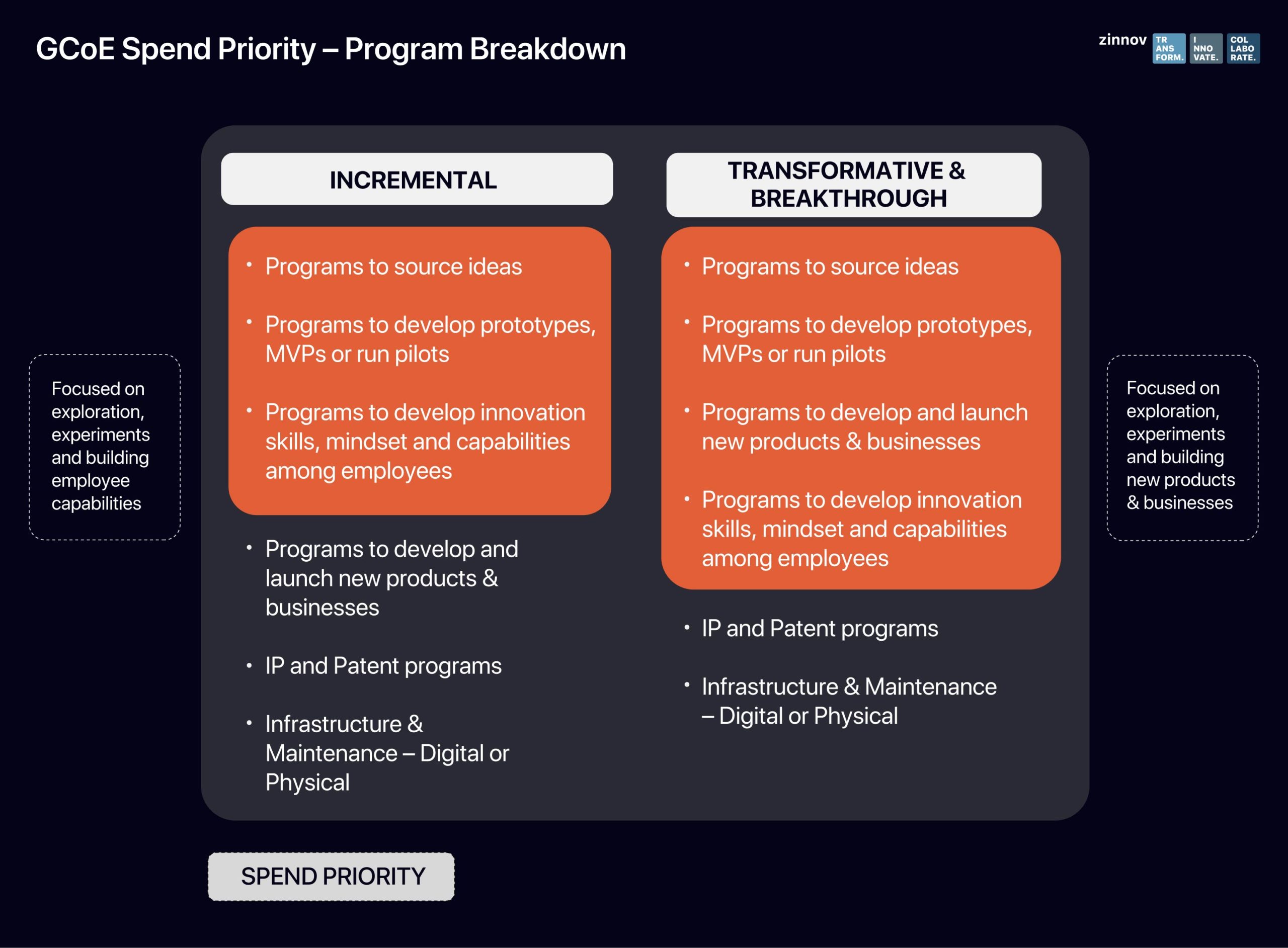
In both scenarios, IP and Patent programs fare lower on the priority spend ranking, indicating that GCCs are not focused on asset creation as much as they are on commercialization. This is extremely encouraging as it is innovation that drives the business forward, and not invention. Invention, invariably associated with IP and Patents, is about creating a new product, solution, or process for the first time. Innovation, however, is about turning a new or existing product, solution, or process into something practical, affordable, and reliable that customers want to use.
Participation of business sponsors, both from BU and Global HQ, is critical to driving Transformative and Breakthrough Innovation. Such sponsorship offers accountability for innovation efforts while also supporting the programs with resources such as capital and leadership expertise. It ensures that innovative projects taken up by the business and do not end up as orphans.
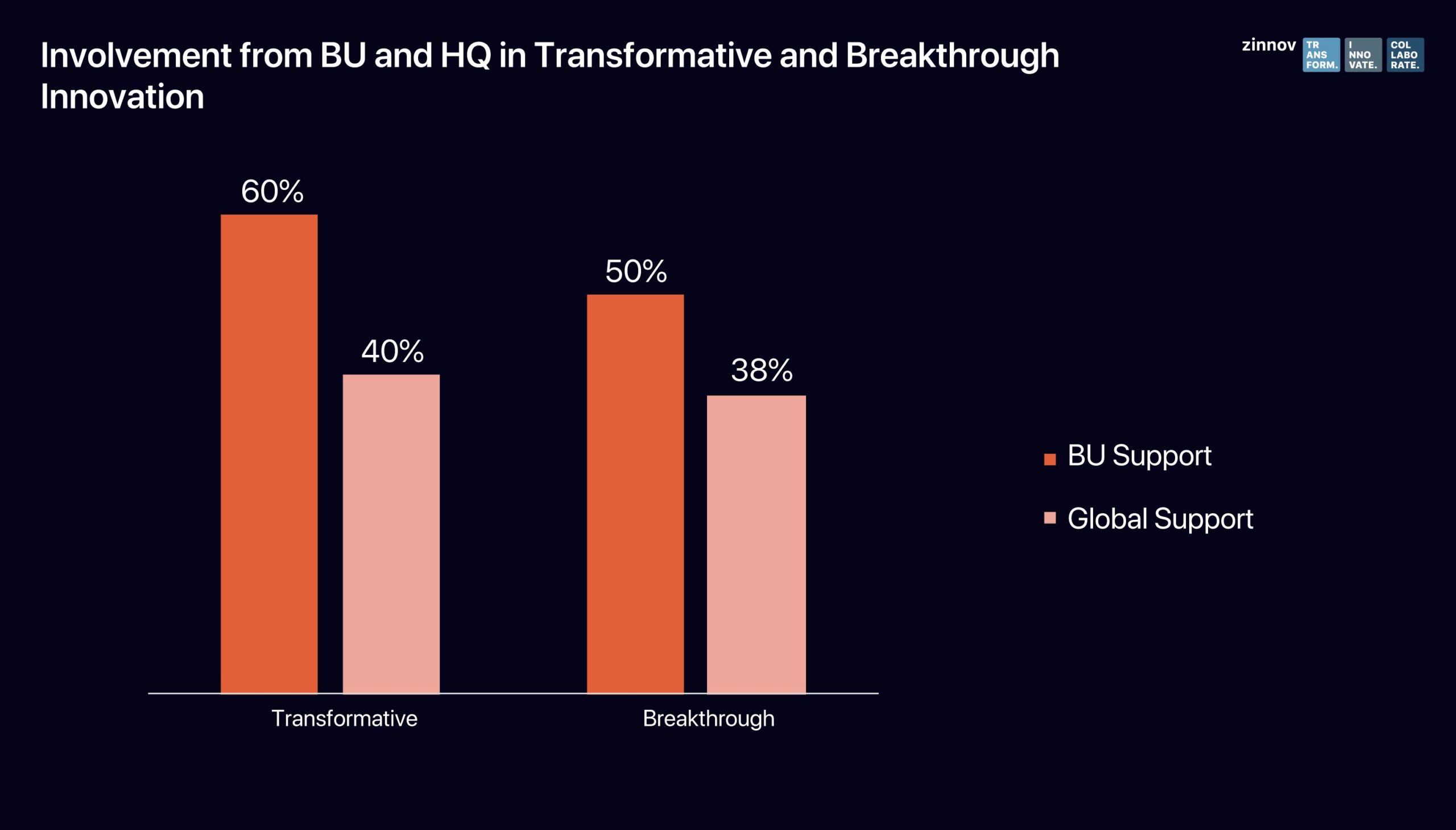
While centers have started working on Transformative and Breakthrough Innovation, they do not have the requisite involvement and commitment from BU and/or HQ. Unlike Incremental Innovation, GCCs must seek BU and HQ support early in the journey, to improve the odds of success for Transformative and Breakthrough Innovation.
Ultimately, GCCs prioritize their innovation spends primarily based on the type of innovation they seek to drive – Incremental, Transformative, or Breakthrough.
Most commonly, GCCs drive Incremental Innovation in Product/Service areas through Internal Innovation programs. However, if GCCs want to drive high-value innovation from the center and become true Innovation Hubs, the findings of the survey clearly point out 4 key questions that GCC leaders need to answer while thinking about their Innovation Strategy –
Answering these questions will help GCCs think about adding high-value Transformative and Breakthrough Innovation to their Innovation Strategy and move beyond Incremental Innovation. It can be a starting point to assess their existing innovation capabilities and develop a roadmap for high-value innovation from their center.